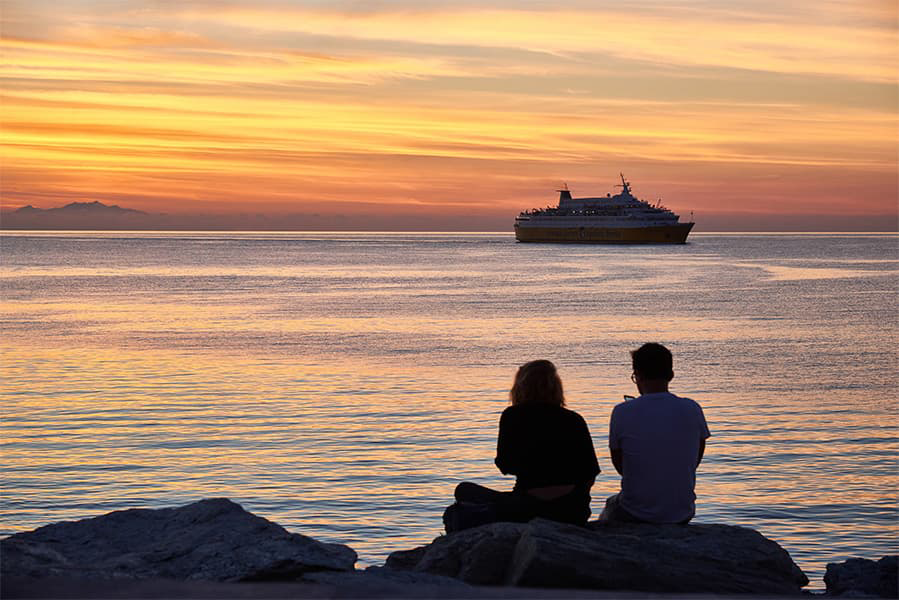Vibo Valentia – Vulcano
Ferries to Aeolian Islands
Vibo Valentia – Vulcano
Ferries to Aeolian Islands

There are around 2 weekly sailings from Vibo Valentia to Vulcano. The Vibo Valentia Vulcano ferry is operated by
Ferries from Vibo Valentia to Vulcano typically depart from Vibo Valentia at around 16:00. The average sailing time of a Vulcano Vibo Valentia ferry is approximately 3h 30m.
Ferry prices for Vibo Valentia Vulcano ferries typically range between €73* and €147*. The average price is around €135*. The cheapest ferry prices from Vibo Valentia to Vulcano start from €74*. The average price for a foot passenger is €135*.
Pricing will vary by season and depend on the number of passengers, vehicle type and sailing time.
The distance between Vibo Valentia to Vulcano is approximately 83.0 miles (133.5km), or 72.1 nautical miles.
No ferry operators currently provide a car ferry between Vibo Valentia and Vulcano
Yes, foot passengers can travel on ferries from Vibo Valentia to Vulcano with Liberty Lines Fast Ferries.
More routes than anyone else.

Compare fares, times & routes in one place.
Change plans easily with flexi tickets.

Book e-tickets & manage trips in-app.
Live ship tracking & real-time updates.

Top-rated customer support when you need it.
| Vibo Valentia - Vulcano Route summary | ||
|---|---|---|
| Departure Country | Italy | |
| Destination Country | Italy | |
| No. of Operators | 1 | |
| Operators | Liberty Lines Fast Ferries | |
| Average Price | 135 €* | |
| Average Weekly Sailings | 2 | |
| Average Sailing Duration | 3h 30m | |
| First Ferry | 16:00 | |
| Distance | 72 nautical miles | |
* Prices subject to change, pricing is taken from last 30 days, last updated 2024-09-04.
The small Italian island of Vulcano lies in the Tyrrhenian Sea and is roughly 25 km off the coast of the island of Sicily. It is the southernmost of the eight islands that make up the Aeolian group of islands. The island has a number of volcanic centres, including one of four active, non-submarine, volcanoes in Italy. The most recent volcanic activity on the island was at the Gran Cratere at the top of the Fossa Cone, with the cone having grown in the Lentia Caldera in the middle of the island, and has had around 9 major eruptions in the last 6,000 years. However, since the eruption of the Fossa Cone between 1888 and 1890, which deposited around 5 meters of material on the summit, the island has been quiet. For the brave, visitors are able to walk to the crater of a volcano where you can observe smoke coming out of the ground! Apart from the volcanos the island is popular with tourists because of its hot springs which are only a short walk from the island's harbour.